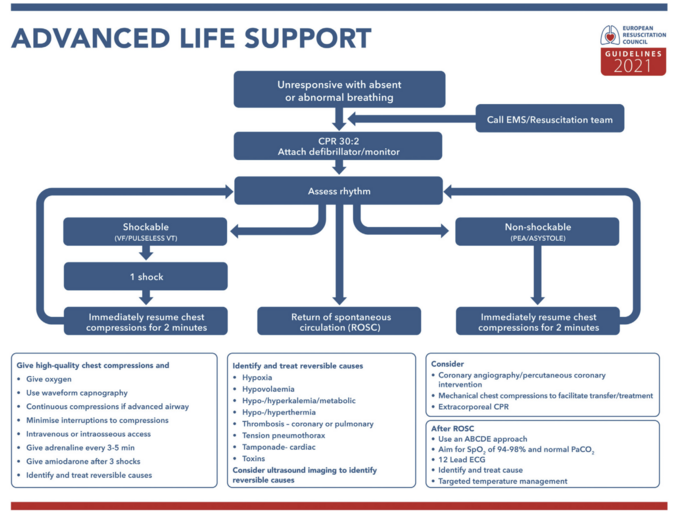Cardiac arrest: Difference between revisions
(Created page with "'''Cardiac arrest''' refers to when the heart stops beating, providing no or very little cardiac output. It is diagnosed when a patient is unresponsive and not breathing or breathing abnormally. As there is no cardiac output there is no pulse either, but an unconscious patient who is not breathing likely has cardiac arrest so time is not wasted feeling for a pulse. Cardiac arrest inevitebly leads to death unless successfully managed. Management of cardiac arrest is...") |
(No difference)
|
Revision as of 14:50, 12 October 2024
Cardiac arrest refers to when the heart stops beating, providing no or very little cardiac output. It is diagnosed when a patient is unresponsive and not breathing or breathing abnormally. As there is no cardiac output there is no pulse either, but an unconscious patient who is not breathing likely has cardiac arrest so time is not wasted feeling for a pulse.
Cardiac arrest inevitebly leads to death unless successfully managed. Management of cardiac arrest is called cardiopulmonary resuscitation (CPR).
We distinguish two types of CPR, basic life support (BLS) and advanced life support (ALS). CPR always involves chest compressions and ventilation. Basic life support can be learned by anyone and provided by any bystander and layman under guidance by emergency services over the phone. Some public places have automatic external defibrillators (AEDs) which any layman can use as well.
When emergency medical services arrives (if occuring outside a hospital) or CPR team (inside hospital), advanced life support (ALS) is used instead of basic life support. ALS involves the continued use of chest compressions and ventilations, but with the addition of manual defibrillators and certain drugs.
During CPR, high quality chest compression and early defibrillation are the only measures which are known to significantly improve prognosis. The evidence of efficacy of the drugs used is poor, and so chest compression and defibrillation should be prioritised.
The goal of CPR is to achieve return of spontaneous circulation (ROSC). Following this, post cardiac arrest treatment (PCAS) should be initiated immediately as cardiac arrest may occur again.
Despite perfect CPR, the prognosis of cardiac arrest is very poor. While around 10-30% of out-of-hospital cardiac arrests achieve ROSC, less than 10% of them survive to hospital discharge. Many of the survivors have poor neurological function lifelong. The survival rate for in-hospital cardiac arrest is a bit better, probably due to rapid initiation of ALS and that the patient's medical history is known. The prognosis is much worse for patients with chronic illnesses; <2% of patients with advanced COPD, heart failure, malignancy, or cirrhosis survive for at least 6 months after cardiac arrest. Patients massively overestimate the success rate of CPR (due to inaccurate displays of CPR on television).
Advanced life support algorithm (by the European resuscitation council)

Four different rhythms may be found when connecting the defibrillator to
